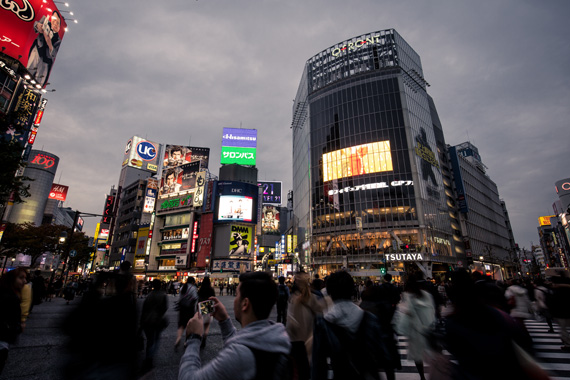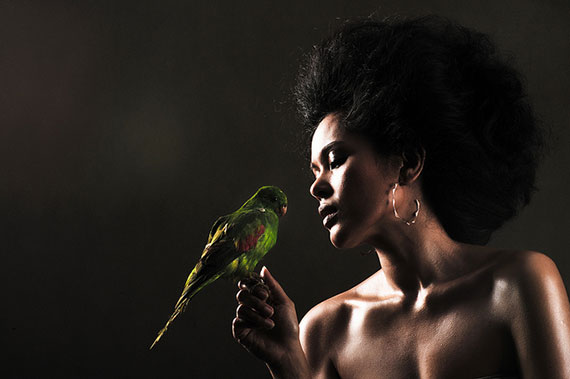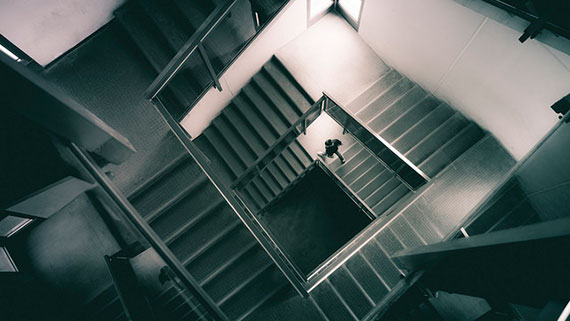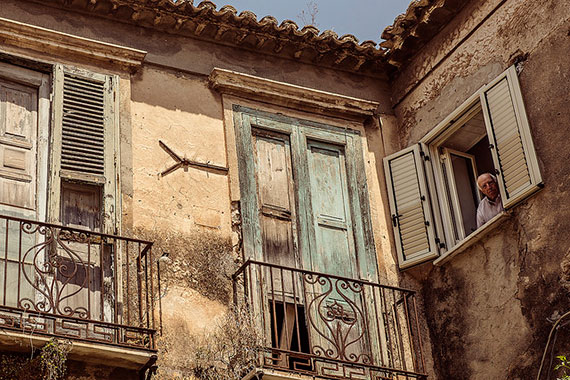I spend a lot of my free time on the web exploring the work of professional and amateur photographers for ideas and inspiration. What I have discovered is that there is a lot of mediocrity out there and most of this is due to what I call a “lack of style.”
Now, before you get your knickers in a knot (you other photographers) I place myself firmly and squarely in that category of having a lot of mediocrity circulating out there for public consumption. This got me thinking, how can I improve on my photos? My conclusion – image style!

Photo by Richard Schneider; ISO 125, f/8.0, 1/6-second exposure.
Surf the web today and you will find a plethora of photographers at all levels whose portfolios are nothing but a schizophrenic journey through colour, B&W, HDR, IR and God knows what else. Most of which is pure rubbish simply due to a lack of style.
At this point you are probably thinking, “What is this style thingy this nut bag is talking about?” Think of it as your signature. there are many great photographers out there who possess what are easily recognizable signatures to their photos. Adams, Beckerman, Gruen are a few for whom I can easily identify their work by looking at their photos simply because they possess a certain look uniquely their own – their signature, their style.
So why is this important? In my constant search to define myself and my photography I have laboured long and hard to figure out who, and more importantly, what is my focus in photography. You hear photographers talk about their genre with terms such as “Landscape Photographer”, “Wildlife Photographer”, “Street Photographer”, etc. I think it is important to specialize, to focus on a particular field of photography. Nevertheless, many photographers, such as myself, take a wide variety of photographs many of which are outside their chosen specialty either for fun or for necessity (such as here on Ecuador Unplugged). In the end though, I firmly believe if you specialize then at least 90 to 95% of your photography time should be focused on that area.
Specialization is important but it does not go far enough, most photographers stop at this point in terms of defining their work and leave out the most important aspect – creating a distinctive image style all their own. Sure, the images are cleaned up, the colour adjusted, and over Photoshopped etc. In the end each photo is completely different from the next leaving the viewers with little to no sense of a present or emerging style from the photographer.

Photo by Jason Tan
Your Style Defines Your Images
Creating an individualistic style for your work is an evolutionary process in photography. You must experiment and dabble for some time before you can truly determine how your images will look. Rarely will you be fortunate enough to stumble upon your own unique signature immediately. There are many aspects to defining your own style for your work and I have narrowed this down to three key components to help you along the way.
Medium
What is your medium of choice? Is it colour, black and white, HDR, etc? Find a medium and stick to it, let it define you. There is nothing more distracting than looking at a portfolio that is all over the map, some B&W, some HDR, some IR, some colour. It tells me that the photographer does not know what he/she likes and really is either appealing to the masses or has not settled on, or cares about, their style. Similar to my specialization rule at least 95% of my focused work will be in the medium of choice, in my case B&W. Yes there are always exceptions, but do not let those exceptions overshadow the rule.
Look & Feel – aka Signature
Probably the most difficult and time-consuming component of determining your individual style of photography and the most fun. Trial and error and countless processing experiments in what ever photo processing tool you use will help you refine the look and feel of your style. Keep in mind the mood, and subject of your genre and through a lot of fine tuning you will eventually create the processing tools necessary to give your images that unique style that will tell the viewer this is YOUR photograph. Establishing presets, and formulas will help you to pump out your styled photos faster once you have established the correct tuning of your images. Don’t be afraid to use the programs at your disposal and don’t be discouraged when most of your images do not turn out the way you envision. After all this is a marathon not a sprint, but when you get the right formula you can move on to the third element.

Photo by M. Accarino; ISO 320, f/3.5, 1/60-second exposure.
Consistency
Ok, so you have your genera, you have your primary medium and you have refined your look and feel to the point you now have a signature style that you will apply to your images. Now the most important and perhaps the most difficult component to implement, consistency. It is tempting for anyone to continually tweak and change things, but in this case you need to let go of this. Minor adjustments and tweaks will always be part of the process as long as it does not radically alter your look and feel – otherwise you will have a completely different signature. Consistently apply your signature to your images. Think of this as “branding” from a marketing perspective – if you are continually changing your brand, brand message and brand image you will confuse and lose your customer base (whether paying customers or simply fans). This is why consistent application of your signature style is important to not only your images but your brand.
Conclusion
Some observations to consider in developing your signature style and a lasting portfolio. Processing software is a great boon and a horrible curse to photography. Avoid at all cost “gimmicky” tricks to your photography, while fun to play with things like selective colouring, horses jumping out of colour frames into B&W back grounds and over Photoshopped images, these really do not stand the test of time. Read what most of the great photographers of our era, and bygone eras, say regarding processing photos – if it can’t be done in less than five minutes don’t do it. Then look at their work and you will see that most are simple, without bells and whistles and flashing lights but they have a unique signature all their own.

Photo by Petra Bensted; ISO 100, f/9.0, 1/250-second exposure.
Whether you agree or not, defining your style is an important feature of your work. I look forward to taking this journey with you, and I have lots of work ahead in refining and defining my own signature style but I know it will be an exciting adventure.
About the Author:
Adrian is a Canadian photography enthusiast and self fashioned street photography living in Guayaquil, Ecuador. He writes for EcuadorUnplugged which is his homage to the sights, sounds, smells and tastes of what makes Ecuador a true paradise and his new home one click at a time.
Like This Article?
Don't Miss The Next One!
Join over 100,000 photographers of all experience levels who receive our free photography tips and articles to stay current:






You forced me to wonder what my style was, after +40 years of enjoying this wonderful hobby. To me, the joy is in full journey & not only the result. Even if I had no style & was running around like a headless chicken :)
I’m just starting out as a professional, but I’ve had a camera in my hand since I was 13yrs old…..I’m pretty good lol and I’m really not trying to be smug right. I came to this article because I’m not exactly sure what my style is? I just shoot and sometimes I’ll get a great shot first try? Sometimes it takes literally 100 lol but quitting isnt something I do. How would I describe MY style though? Mostly I love scenery, cool buildings, landscapes…I also got some pretty good shots of birds too (and also realized how hard it is to shoot birds lol)
It’s funny how I found this page whilst googling for the precise sentence “how to radically change your photography”, as I felt that I wasn’t getting, in the social media, as many likes as the next photographer with whose formulaic shots abound in their portfolio.
On reading it, I realised: “Heck I think my shots do possess a candid, grainy, “telephoto look” to them. The heck with it!”. So, I’ll concentrate on improving that decade-and-a-half-long style instead of yielding to vanity and be a “likes” seeker! Thank you!
PS: I honestly failed to find a published date for either your article or its comments; so I’m note sure whether I’m late for the party or not, ie., how many years behind the others I may be whilst posting this very reply.
I think we need to do what we enjoy doing and our style will show. Your suggestions breed conformity, even if to one’s own chosen “style”. I rebel against conformity and like to dabble in different things and ideas, or I lose my creative abilities. So, I guess for me, my “style” is doing what I enjoy and changing as I learn.
Thoroughly enjoyed your article on defining your style in photography. We have a tendency to forget that almost all of the fine art in the world is defined by a signature, but yet we as photographers neglect to define our art with a signature.
Well timed article, I have been thinking about this a lot recently, I have been all over the place with my photos, I’ve tried a lot of different styles, testing the waters you might say, but I WANT to find/define MY personal style. These pointers are a great way for me to focus, thank you. And jmpena, totally agree with your comment, all the great artists signed their work, photographers need to do the same.
Thanks everyone, I am glad you enjoyed the article. I wish you all the best in defining your own signature looks!
– Adrian
Great read..! So true that image ‘style’ or ‘signature’ is missing from majority of the portfolios these days. I, myself, am included in that group. And yet, that is what separates a great photographer from a mediocre one.
I find this writing very inspirational. I am going to find my ‘style’, my ‘signature’ and try to stay with it. I think it’s imperative for the survival of the photographer inside of me.
I thank you, Mr. Stone.
Very timely advice, as I’m preparing for my first arts fair, and trying to trim a few hundred pics into a dozen or so (hopefully) sellable shots has been daunting. One thing my wife and I have discovered is that, yes, if you’re all over the map style-wise, you aren’t really saying anything.
I particularly agree with your comments on processing – “If it can’t be done in 5 minutes, dont do it” rings true with me as I’m not a fan of overly processed images.
Though if someone is enhancing colours/shadows/highlights etc go for it I say.
What you say is true of every great artist. You have to define your style and perfect it.